Talk with our local travel specialist who can help organize your trip.
Annapurna Base Camp Trek - A Complete Guide
Annapurna Base Camp also called ABC or Annapurna Sanctuary is the most popular trekking destination located in North western Nepal’s Annapurna region. It is located in the heart of the Annapurna Conservation Area, west of Pokhara. A short trek to the base camp (4,130m/13,547ft) offers dominating views of the Annapurna I, the first mountain over 8000m to be climbed, and its surrounding range.
In addition to all the glamor of a Himalayan landscape, the Annapurna Base Camp trek is also relatively cheaper, accessible, and shorter. The legacy of the Annapurna range and the stories surrounding its mountaineering history adds even more value to the Annapurna Base Camp trek. The ABC trek is one of the few trekking routes that are mostly forested with unique flora and fauna. Passing through ethnic Gurung and Magar settlement further amplifies the whole experience of the trek.
Trip Facts
|
Trek Distance: |
70 km |
|
Trip total Days: |
11 Days |
|
Trekking Days: |
8 Days |
|
Difficulty Level: |
Easy to Moderate |
|
Best Season: |
Spring (March to May) and Autumn (Mid-September to November) |
|
Maximum elevation |
4,130m/13,547ft at Annapurna Base Camp |
Table of Content
- Annapurna Base Camp Trek Route
- Annapurna Base Camp Trek Itinerary And Map
- Alternate Routes- Trekking Via Poon Hill
- Annapurna Base Camp Trekking Permits (ACAP And TIMS)
- Annapurna Base Camp Trek Cost
- ATM Facilities On Annapurna Base Camp Trek
- Cost Saving Tips For Budget Travelers
- Trekking Gears Or Required Trekking Equipment List
- Backpacking For Annapurna Base Camp Trek
- Accommodation And Foods On Your ABC Trek
- Travel Insurance
- When To Trek Annapurna Base Camp?
- Acute Mountain Sickness (AMS) And ABC Trek?
- Things To Know Before ABC Trek
- Daily Walking Hours And Distance
- Annapurna Base Camp Trek Difficulty
- Getting Pokhara From Kathmandu
- Internet Facility On Annapurna Base Camp Trekking
- Conclusion
Annapurna Base Camp Trek Route
Kathmandu >> Pokhara >> Ghandruk >> Chhomrong >> Bamboo >> Deurali >> MBC >> Annapurna Base Camp
Annapurna Base Camp >> Bamboo >> Jhinu Danda >> Matque >> Pokhara >> Kathmandu
Annapurna Base Camp trek is one of the oldest and the most popular trekking trails in Nepal located in the core of the Annapurna Region. The 11 days trip takes you to the Annapurna Base Camp and offers panoramic views of the tenth highest mountain in the world, Annapurna I (8091m).
The trek route commences from Kimchi then heads to Annapurna Base Camp via Machhapuchhre Base Camp then concludes at Matque. Apart from the amazing views of Annapurna massif and surrounding peaks, the major highlight of the trek is passing through the typical Ghandruk village of ethnic Gurung communities. Traversing through the rhododendron-clad forest, waterfalls, boulders, and hot spring makes the entire trek adventurous, yet easy.
Annapurna Base Camp Trek Itinerary And Map
Annapurna Base Camp Trek is an 8 days trekking experience in the standard trek route beginning with a trek from Kimche to Ghandruk. From here on, the route takes you to Annapurna Base Camp via Macchapuchhre Base Camp. Then, the trek descends to Jhinu Danda then Matque. It is a well-suited trek for backpackers who have a limited time of travel in Nepal. If your main goal is to reach the Base Camp then this is the right trek for you. It is short and less costly.
In addition to the above-mentioned route, there is also an alternative route which is an extended version of the standard Annapurna Base Camp trek.
Brief Itinerary
|
Day 1: |
Arrival in Kathmandu (1,400m/4,592ft) |
|
Day 2: |
Fly to Pokhara (800m/2,624ft.), drive to Kimchi and trek to Ghandruk (1,940m/6364ft.) - 25 minutes flight, 2:30 hrs drive, 2 hours (2 km) trek |
|
Day 3: |
Trek to Chhomrong (2,170m/7,118ft) - 5-6 hours (10 km) trek |
|
Day 4: |
Trek to Bamboo (2,310m/7,577ft) - 5-6 hours (7 km) trek |
|
Day 5: |
Trek to Deurali (3,230m/10,595ft) - 4-5 hours (8.5 km) trek |
|
Day 6: |
Trek to Annapurna Base Camp (4,130m/13,547ft) via Machhapuchhre Base Camp (3,700m/12,136ft) - 4-5 hours (8 km) trek |
|
Day 7: |
Trek to Bamboo (2,310m/7,577ft) - 7–8 hours (16.5 km) trek |
|
Day 8: |
Trek to Jhinu Danda (1,760m/5,773ft) - 5-6 hours (9 km) trek |
|
Day 9: |
Trek to Matque (1,070m/3,510ft) drive to Pokhara (800m/2,624ft) - 1-2 hours (3 km) trek, 2: 30 hours drive |
|
Day 10: |
Fly to Kathmandu (1,400m/4,592ft) - 25 minutes flight |
|
Day 11: |
Final Departure |
Annapurna Base Camp Trek Map
Alternate Routes- Trekking Via Poon Hill
Although above mentioned is the best short itinerary to explore the Annapurna Base Camp, agencies like Third Rock Adventures also offer tailor-made itinerary best suited for you. The days in the trip can either be extended or reduced. The things to consider for the tailor-made services are the days you can spare for the trek and your physical fitness to complete the trek if the days are reduced. In consultation with our professional team, you can ask to manage the itinerary as per your need.
In addition, trekkers also have an option of a detour along the standard ABC trek to the much talked about Poon Hill vantage point. You can begin your trek from Hile to Ulleri then head to Ghorepani from where the route reaches the viewpoint of Poon Hill. Then it sticks back to Chhomrong, the way to Annapurna Base Camp taking the standard trail. Descending to Jhinu Danda, trek concludes in Matque. If you wish to spend some extra bucks and flex your legs, then this extended trek is best suited for you.
Annapurna Base Camp Trekking Permits (ACAP And TIMS)
Annapurna Base Camp trek lies in the Annapurna Conservation Area so it requires the ACAP permit. Trekkers Information Management System (TIMS) card is required for many treks in Nepal so it is also mandatory.
Following are the required permits with their cost:
- ACAP permit fee for foreigners: 3,000 NPR (Approx. USD 30) For SAARC nationals: 200 NPR
- TIMS permit: 1,000 NPR (Approx. USD 10)
Both the permits can be obtained from the Nepal Tourism Board Office in Pradarshani Marg, Kathmandu, 20 minutes stroll from Thamel. The office opens from Sunday to Saturday from 9:00 AM to 16:00 PM (NT). If not from Kathmandu, then you can also acquire it from Pokhara’s TAAN Office located in Santi Patan. Carry all the documents needed including your insurance policy number, information about your daily itinerary and route, a copy of your passport, and 2 passport-sized photos. If your trip is being planned by a local agency then they will manage the permits for you.
The permits are non-transferable and non-refundable. Entry fee is not required for children under 10 years of age. Also, ensure that you carry both the permits at all time and show it at the respective checkpoints.
Annapurna Base Camp Trek Cost
The Annapurna Base Camp Trek cost is varied as per the type of trek you are taking. There are a number of factors that determine the ABC trek cost like the number of days, the season of travel, guide and porters hired, transportation medium, accommodation and food standard, group or individual trip and the route.
You can choose from three ways to do Annapurna Base Camp Trek:
All-inclusive Trek Packages
Going on an all-inclusive package offered by a travel agency can cost anywhere from USD 900 to USD 2000. The cost depends upon the services offered to you by the agency. It also depends upon the standard of accommodation, food and travel that you wish to choose, group or individual travel, and the number of days of trip. If you are willing to spend some more money for a luxurious trek, you can ask for additional facilities. However, if you wish to go on a budget, you can ask your agency to cancel out few extra services. While choosing a travel agency, it is better to go with a local rather than an international agency. Local Nepali agencies have in-depth knowledge about the trekking areas and also costs relatively less.
This standard package contains land travel, 3 times meal and tea house accommodation during the trek, guide and porter, permits, tea/coffee breaks, as such. However, the cost does not include international flights, your insurance, and personal expenses like tipping, snacks, food and travel in Kathmandu, phone call, internet, laundry, bar bills, snacks, battery recharge, bottled or boiled water, souvenirs, hot showers, extra porter etc. You need around USD 10 to 20 per day for extra expenses. Additional tipping is expected, but not mandatory. The cost is totally up to your liking and is born separately by you.
Trek with Guide and Porter
If you decide to manage the trek on your own, without travel agency’s package, you will have to get in touch with a local porter or guide. Trekking guide and porters make your travel interesting and easier, particularly in a region you are completely unaware about. You have to manage their accommodation, food, insurance, and land travel expenses in addition, throughout the trek.
Guides are very knowledgeable and are a great asset to learn about the culture, language, and practices of the locality and negotiate well for accommodation. Make sure the guides have prior experience of ABC and are fluent in English, if not your native language.
The porters carry no more than 15 kgs of weight. Make sure to give them the extra luggage that is not used frequently and keep your day pack with yourself. They walk at a much faster pace so they can meet you straight away at the next tea house.
Including everything the guide and porter cost will be:
- Guide: USD 25 to USD 35/day + tips
- Porter: USD 15 to USD 25/day + tips
Cost of doing the Annapurna Base Camp Trek Independently
Trekking independently means organizing your own travel without the help of any travel agencies or guide. Annapurna Base Camp trek can be done independently as well because it is an easy to moderately graded trek. The major advantage of trekking independently is ample cost savings. You will be looking at a cost anywhere from USD 30 to USD 40 per day and other extra costs depending on your personal interest during the trekking days.
Despite the low cost of the independent trek, there are many things that you need to consider. Getting permits from government agencies can be a hassle. Moreover, you have to manage the accommodation and travel on your own which is relatively difficult in the peak season. If you are new to Nepal or Annapurna region, then it is best advised to go on a guided trek in a travel agency's assistance.
Featured Trips
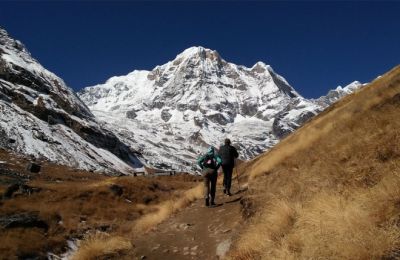
Annapurna Base Camp Trek - 11 days
Annapurna Base Camp Trek - 11 days takes you close to the world's 10th highest mountain, Annapurna I, Gurung culture, rhododendron forest, and terraced fields.
Inquire Now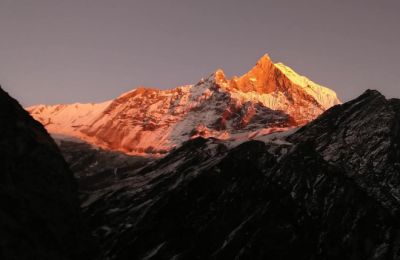
Annapurna Sanctuary Trek - 13 days
Annapurna Sanctuary Trek lasting for 13 days takes you close to a high glacial basin of Annapurna Massif. Hike to Poon Hill and Annapurna Base Camp.
Inquire NowWhere to travel next?
Get help from our travel specialists for holiday ideas that matches your interests.
ATM Facilities On Annapurna Base Camp Trek
ATM and POS facilities are available in Kathmandu and Pokhara because they are major city areas. But after you leave Pokhara and begin your trek, the option gets limited. Hence, it is always a better to carry cash. In this trek you can find ATMs up to Ghandruk village.
Furthermore, foreign currency is not accepted in remote areas so carries only Nepali currency. The currency exchange can be found in Thamel, Kathmandu and Pokhara.
Cost Saving Tips For Budget Travelers
- For a budget backpacking trek in the Annapurna region follow the tips and save some buck:
- Bring your own snacks like dry fruits, energy bars in the beginning of the trip to avoid buying overpriced snacks in higher altitude with only a few shops
- Carry a water bottle and purification tablets to safely drink from local taps/streams and save USD 1-2 on a half-liter mineral water
- Some tea houses will charge you extra for hot water so carry a metal water bottle and place it next to the fireplace in the dining area at tea houses to get warm water at no extra cost
- Some tea houses also charge extra for charging your electronic devices so make sure to carry a power bank
- Hire a guide or make friends with locals of you are traveling solo, so that they can negotiate the accommodation price for you.
- Don’t use Wi-Fi until absolutely necessary because you are charged for its usage which is usually interrupted
- Share room with someone to cut on the cost of accommodation
- As far as possible, stick to a vegetarian diet because meat products usually cost a lot in the higher elevation
- It is best if you enjoy the local delicacy ‘Dal and Bhat’ as your main meal. it is fulfilling for a hungry trekker, keeps you active for a longer period, and is certainly more affordable than other western dishes mentioned in the menu
- If you are opting to travel solo on a budget, then it is best to take a public or tourist bus from Kathmandu to Pokhara and back which will cost you USD 4 to 10, much cheaper than a domestic flight
- In Kathmandu and Pokhara, for inner-city travel, use a public vehicle which is cheaper than the taxi services
Trekking Gears Or Required Trekking Equipment List
Annapurna Base Camp Trek equipment and gears required are very essential to carry because at the base camp the temperature can get cold and the route is tricky at times. The major requirement for this trek is to carry proper warm clothing, shoes, and basic gears. For the right kind of clothing, consider the season you will be traveling, the maximum altitude, and the temperature. While for the right walking gears, consider the difficulty level.
Follow the below list for the basic trekking gears and Equipment:
- Light T-shirt and trekking pants for the day
- Warm Clothes (Head, Hands, Upper Body, Lower Body, required as you progress to higher altitude)
- Down Jacket (for higher altitudes, can be worn during the evening and night)
- Strong hiking boots and flipflop
- Headlamp (useful during a power outage)
- Toiletries and personal hygiene (toothbrush, paste, sanitizer, tissues, feminine products, cosmetics etc.)
- Medication and first aid
- Daypack (30L) to carry valuables
- Large Duffle bag (Optional: will be carried by a porter)
- Items for entertainment (books, iPod, playing cards, etc.)
- Smartphone, personal gadgets
- Trekking pole/ stick
In-depth detail of what to bring on a trek can be found on the blog Packing List for Trekking in Nepal. Most of the treks in Nepal require similar gears and equipment, however, since this is a tea house trek, you will not require any camping gear like a sleeping bag, tents, and so on. Moreover, this is an easy to moderate trek so you might not require heavy gears like gaiters and crampons. Apart from the basics, you can also get in touch with your trekking agency and ask them to prepare a list for you.
Recommended Read: Annapurna Base Camp Trek Packing List - 5 Things Should Not Miss
Backpacking For Annapurna Base Camp Trek
For an all-inclusive trek package, you can only carry a daypack with you and give the rest to the guide and porter. If you are going on an independent trip carrying a backpack then manage efficiently so that you do not lose any space and can quickly access the required item when you need it. For 8 days of trek, a good trekking bag of 35 Liter to 55 Liter should be fine. Instead of carrying the entire luggage all the way from home, you can buy some gears from the trekker’s shops in Kathmandu or Pokhara.
- Frequently used items like snacks, phone, map, sunscreen and first aid kit can be placed on the topmost section of your bag pack.
- In the mid-section of your backpack, you can squeeze your clothes, flip-flops, towel which are not frequently used and are lightweight. Other heavyweight unfrequented items like food, electronics and toiletries can be placed on the right or left side of the mid-section.
- In the bottom section of the bag, you can place your warm jackets, and other medium weighted items. You can place the water bottle on the bottom side pouch and hang your cap or hat in the side of the bag.
While not everything can be jam packed in your backpack, you can send some items not used frequently like extra clothes and food, with your porter, if you plan to hire one. Also, avoid carrying unnecessary clothing, food and electronics. Pack wisely.
Accommodation And Foods On Your ABC Trek
In the Annapurna Base Camp trek accommodation is facilitated in tea houses. Expect the tea houses to have only the very basic facilities with a bed or two and no to little additional furniture. AC and heating facilities are not available. They are relatively better in lower altitudes than at higher altitudes due to the accessibility of supplies and road advancements.
Up until Chhomrong the rooms are standard with attached bathrooms, but upwards from there, they have dormitory rooms and they have communal/public bathrooms and squat toilets. Note that the tea houses make money out of the food that they provide and not the accommodation itself, so the cost for accommodation is very nominal. Hot shower facilities cost extra, around NPR 200 depending upon the tea house. It is difficult to find hot shower and internet facilities in the Base Camp itself.
Food in ABC trek is pretty decent and dominated by the main local dish, ‘dal bhat’ which is a combination of rice, lentil, curry and pickle. It is the cheapest meal in the entire menu and loved by locals as well as tourists. After a long journey, this meal is best to quench your hunger as it is bottomless, you can eat as much rice and lentil. It is worth noting that the quality and quantity is not like in Kathmandu and Pokhara.
Apart from the local dish, you can order from the menu. You will find porridge, boiled eggs, omelet, pasta, or fried rice for lunch or dinner. Food as such in the higher altitude is around two folds expensive than what you can find in the town area because the porters and mules have to carry everything up the tough terrain on foot. In Gurung settlements, you can also opt for the local Gurung bread and potatoes. Drinking water can be found along the route. The bottled mineral water is very expensive so you can try out the water taps or natural springs with a filter or water purification tablets
Check out our Teahouse Trekking In Nepal to help you with planning your adventure..
Travel Insurance
While traveling to a high-risk area or heading for an adventure sport then it is vital to get yourself insured. Trekking in the remote Himalayan region of Nepal can bring a couple of risks like Acute Mountain Sickness for an instance. As there aren’t progressive road advancements in the higher altitudes where vehicles cannot be accessed, so in case of any serious illness it gets difficult to take you to the nearest health post. Hence, there may be a need of helicopter rescue and the cost might be significant as well.
Considering all the risks, it is best to get insured for this trek. It is worth noting that not all insurance companies provide insurance security against high altitude. Hence, make sure that your insurance agency knows about the itinerary of your choice and the policy covers up to 5000m, covers cancellation policies as such.
When To Trek Annapurna Base Camp?
The best time to trek Annapurna Base Camp is most certainly during the seasons of Spring from March to May and Autumn from Mid-September to November.
Spring in the Annapurna region is particularly known to be vibrant when the weather is neither too hot nor too cold. Temperature sways between 16 to 22 degrees Celsius (61 to 68 degrees Fahrenheit). The skies are clear with unhindered views of the Annapurna range due to less possibility of rainy clouds. Furthermore, it is the time for wildflowers and rhododendron to bloom making the route colorful.
Autumn season is another best time for Annapurna Base Camp trek and treks to most parts of Nepal in general. The days are warm and sunny. The temperature ranges from 16 to 22 degrees Celsius (54 to 68 degrees Fahrenheit). Due to the crisp and clear views of the mountains, start of the main Hindu festivals of Dashain and Tihar, it happens to be a peak season with crowded trails and tea houses. But it is a good chance to intermingle with new people as well.
The Winter season lasting from December to February is generally colder. You will require warmer clothing and have to walk through heavy snow in a higher altitude. Summer and Monsoon that spans from June to Mid-September is hot, humid, with chances of rainfall. The trail can get muddy and slippery and the views can be obstructed which makes it the least preferred time to trek ABC.
Acute Mountain Sickness (AMS) And ABC Trek?
Altitude sickness is pretty common for trekkers as you elevate higher than 3000m. As you head to the higher altitude, the atmospheric pressure and oxygen level reduces, which your body cannot easily cope up. Altitude sickness can be categorized into many types but the first and the most common is Acute Mountain Sickness (AMS). You may experience some mild symptoms like headache, fatigue, loss of appetite and discomfort to severe symptoms like dizziness, vomiting, insomnia and rapid heart rate. Before things can get a fatal turn, it is wise to be aware about these symptoms and take precautions. Altitude sickness is also relevant to some factors such as daily walking hours, difficulty level and the maximum elevation.
For the Annapurna Base Camp trek, the trail reaches to a maximum elevation of 4130m in the base camp so you need to take precautions accordingly. Even before the trek starts, you can engage in some regular exercise and cut smoking and drinking alcohol. During the trek itself, you need to properly follow the itinerary carefully drafted to reduce the risk of AMS. Don’t try to rush from a lower to a higher elevation, take proper rest and acclimatize. Furthermore, you can carry Diamox tablets as a precaution with consultation from your doctor, take carbohydrates, eat dry fruits and nuts, and stay hydrated.
If you do happen to face these symptoms then make sure to tell your guide, or the owner of tea house if you are traveling solo, so that they can assist you accordingly.
Featured Trips
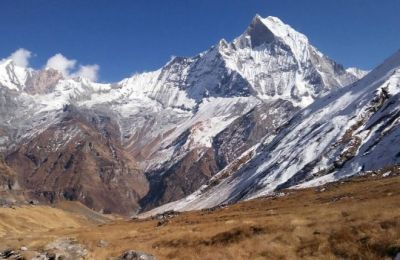
Annapurna Base Camp Short Trek - 7 days
A wonderful opportunity to visit ABC in a short span of 7 days. Annapurna Base Camp Short Trek is a safe trip with an experienced local guide. You can explore Gurung villages and walk close to Annapurna I, the 10th highest mountain in the world.
Inquire Now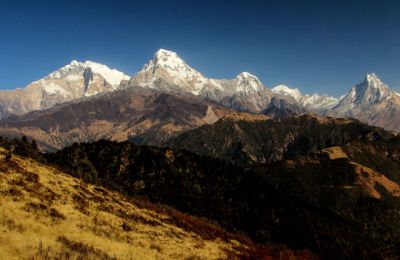
Annapurna Panorama Trek - 10 days
The Annapurna Panorama Trek designed for all age groups that offers panoramic vistas of some of the highest Himalayas in the world. This trek ranging from 6 to 10 days, has many variations, most following classic routes while some newly formed routes.
Inquire NowWhere to travel next?
Get help from our travel specialists for holiday ideas that matches your interests.
Things To Know Before ABC Trek
It is always best if you are fully aware about what to expect before going on long treks in the Himalayas of Nepal. Following mentioned are the things that you need to be prepared with or need to know before ABC trek:
- Always carry Nepalese Rupees (NPR) as along the remote trekking routes you will not find ATMs, POS machines or QR payment system. Also, dollar currency is generally not accepted and efficient in the local settlements. Hence, carrying hard Nepali cash is the way to go.
- Never forget to take your trekking gears. However, you don’t need to bring them from home. The best option to avoid excess luggage during your flight to Nepal is to buy or rent these gears from specific trekking stores in Kathmandu and Pokhara.
- Drink Plenty of Water as dehydration is a major concern for many trekkers during the long-distance walk. Particularly in ABC route, finding fresh water can be difficult so it is advised to carry a water bottle with a filter or purification tablet.
- Carry a map or any other navigating item with you to know where you are in the unknown route
- Respect the culture, religion and tradition of the ethnic communities that you come across during the trek and avoid making any unwelcomed remarks
- Start early to get the views of the Annapurna Himalayas and enjoy the refreshing morning air. Early morning sunrise touching the peak summits is a must-see.
- Give way to animals like yaks, mules and donkeys that are carrying a heavy load. You’ll come across many such animals who won’t do you any harm if you simply let them proceed on their way.
- Altitude sickness is common as you head over 3000m of elevation. To avoid falling victim to it, you can properly follow the itinerary and take come medication as per the consultation with your doctor.
- Try out the local cuisine particularly ‘Dal Bhat’ (Lentil soup and rice with curry and pickle) which is easily found, delicious, fulfilling and cheaper than other western dishes.
- Carry light snacks such as dried fruits, cookies, energy bars which will give good stamina and energy along the unforgiving long uphill trek without many tea houses along the way.
- If you are traveling solo then it is better to request the owner of the tea house from where you are starting to book a room in advance for your next stop and so on.
- Practice responsible traveling by creating only a positive impact on the environment and social aspects by contributing to the conservation of culture and nature, which will be highly respected.
Daily Walking Hours And Distance
Annapurna Base Camp trek distance starting from Kimchi and ending at Matque is approximately 70 km. The trek lasts for about 8 days with an average of 5 to 6 hours trek per day. Somedays you might have to walk a little more than the average and somedays a little less. It is a good trek for those enthusiasts who have a time constraints. Typically, your trekking day starts between 7 to 8 AM.
Annapurna Base Camp Trek Difficulty
Annapurna Base Camp trek is graded as easy to moderate level trek. The grade depends upon a lot of factors including the number of trekking days, maximum elevation, trekking season, and terrain. Although it is not physically demanding than other treks in the Annapurna region, it does require you to be reasonably fit.
The trek is suited even for active children and old-aged groups. There is no particular age limit to the trek. The trail crosses some uphill and downhill terrain. The trail sees a lot of stone steps that you have to climb which gets tiring. In the higher elevation you might have to walk past a snowy trail. Annapurna Base Camp altitude of 4,130m/13,547ft might also pose as a difficulty if you fall victim to AMS.
Engaging in some exercise like jogging, swimming and hiking from a month before the trek can get you physically prepared for successfully covering the harsh terrains in the higher altitude. Also, to minimize the probability of walking on heavy snow, it is best to avoid the winter season. Furthermore, if you have a porter with you to carry your heavy luggage then it will be much easier to simply trek with a smaller backpack giving less stress to your shoulders. If you take appropriate training and make preparations for the trek then the rewarding views are there for your taking.
Getting Pokhara From Kathmandu
Pokhara is located 204km/126miles from the capital city of Kathmandu. You will have two options to get from Kathmandu to Pokhara; either by Air or by Land.
You can opt to travel by air then it takes about 25 to 30 minutes. There are more than 1 flight per day starting as early as 6:45 AM with the last flight at 4 PM. For a tourist, a one-way ticket generally costs USD 125. This is included in the trekking package by the travel operators and is the most hassle-free way of traveling. Furthermore, if you wish to have a coz experience and can afford to lay out some extra bucks then you can ask to charter a helicopter.
If you wish to travel by land, then on average it takes anywhere from 6 to 8 hours to take the Prithvi highway. If you are looking for budget travel it is best to travel one-way by a tourist bus which costs about USD 7 to 25, depending on the facilities offered. For a cheaper option, you can travel by public bus costing around USD 4 to 5. But brace yourself for an unforgiving experience with no air condition, loud noises, and a bumpy ride. Alternatively, for luxurious travel even by land, you can hire a private car or a private jeep which will cost USD 150 to 240.
Internet Facility On Annapurna Base Camp Trekking
Internet facility is available throughout the trail in Annapurna Base Camp trek. From Kathmandu to Chhomrong you will be facilitated with high-speed internet, but from thereon the connectivity will get erratic and irregular as you progress to the higher altitude. Sure, you can connect with your loved ones and post pictures in your social media account, but be prepared to bear the high cost as well.
Wi-fi service is accessible in most of the tea houses in the route. They will charge you anywhere from NPR 200 to NPR 150 an hour for the usage. Furthermore, its fast connectivity and availability in uncertain. It may even slow down or shut down in case of a power outage.
If you have a local GSM-operated SIM card from Kathmandu or Pokhara, then you can even use the mobile internet (GPRS) by purchasing a data pack. However, in the higher altitude due to no reception, GPRS might not work. Hence, it is wise to use Wi-fi facilities only if absolutely necessary.
Conclusion
Annapurna Base Camp trek is one of the most rewarding experiences that are not just easily accessible but comparatively cheaper and shorter as well. If you wish for a different experience in the Annapurna region, then you can opt for the Annapurna Circuit Trek as well.
Third Rock Adventures assures that all your treks in Nepal are safe, adventurous and memorable. You can reach out to us anytime to get professional advice as well as proper trek management.
- Written by: Naba Raj Amgai
Updated: Jan, 10, 2023

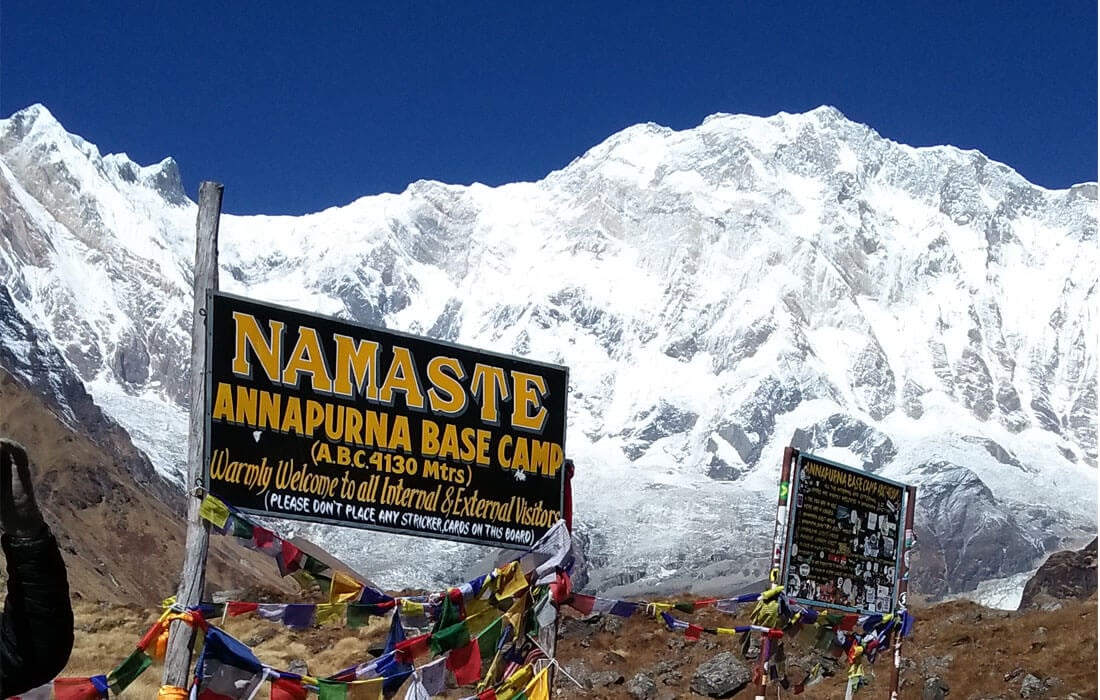













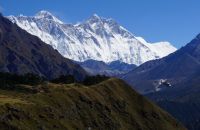
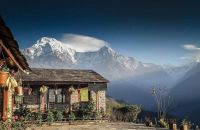
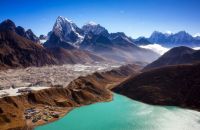
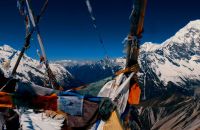
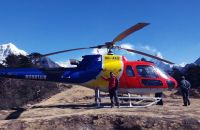
















Recent Comments